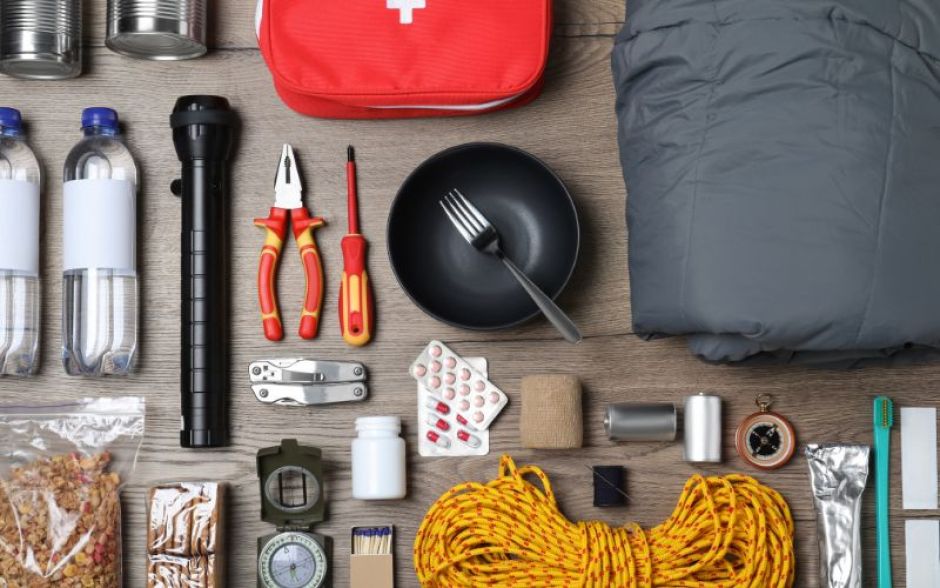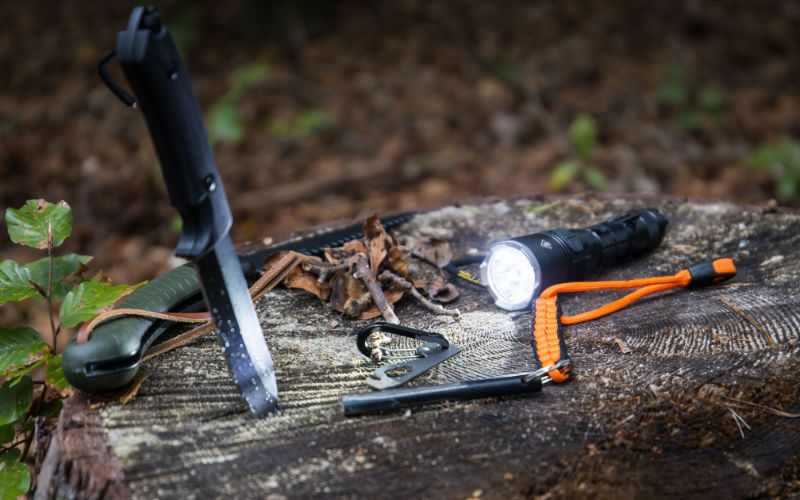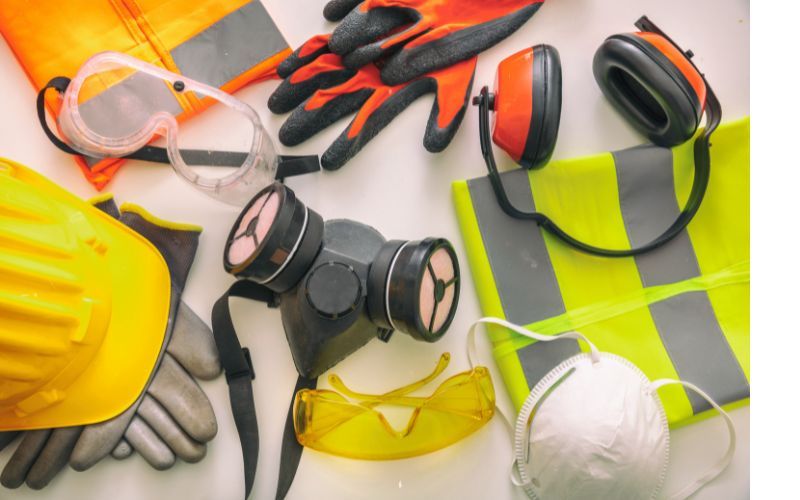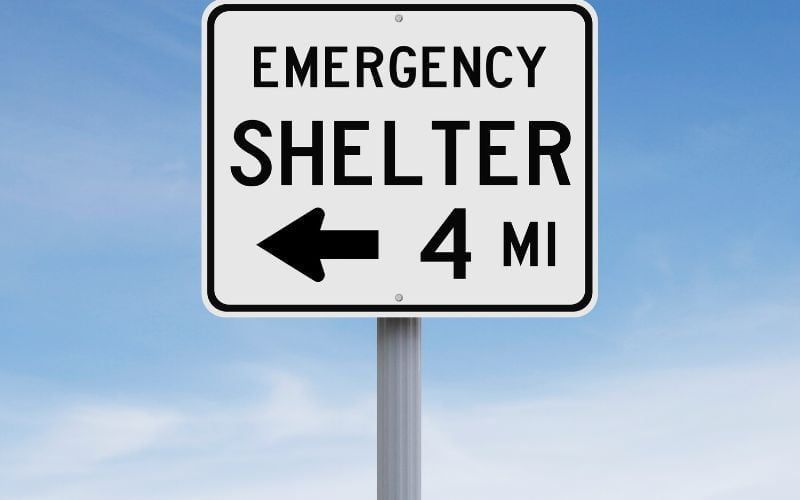
Survival Tools : Your Comprehensive Guide to Preparedness 2023
Survival Tools – In a world where unforeseen disasters, emergencies, and survival situations can strike at any moment, being prepared is not just an option; it’s a necessity. This comprehensive guide explores the realm of Survival Tools, an essential sub-category of Safety & First Aid. Survival tools are not just gadgets; they are lifelines that empower individuals to overcome challenges, adapt to the unexpected, and ensure their well-being in extreme conditions.
In this extensive article, we will delve into the significance of survival tools, explore the different types available, and provide expert insights on how to choose the right tools for your specific needs. Whether you’re an outdoor enthusiast, a prepper, or simply someone who values preparedness, understanding survival tools and having the right ones at your disposal can mean the difference between vulnerability and resilience in critical situations.

Table of Contents
The Significance of Survival Tools
The Significance of Survival Tools goes far beyond mere gadgets; these tools play a pivotal role in ensuring human safety, well-being, and survival in a wide array of challenging circumstances. Their importance cannot be overstated, as they provide individuals with the means to face and overcome adversity with confidence and resilience. Here, we delve deeper into the significance of survival tools:

- Self-Reliance and Empowerment:Survival tools empower individuals to take control of their situations and be self-reliant. In emergencies or when venturing into the great outdoors, the ability to secure shelter, procure food and water, and address medical needs without relying on external assistance is invaluable. This self-sufficiency fosters a sense of empowerment and self-assurance.
- Adaptability Across Environments:One of the remarkable qualities of survival tools is their adaptability to diverse environments. Whether you find yourself lost in the wilderness, facing a sudden urban disaster, or stranded in a remote location, these tools can help you adapt and overcome the unique challenges presented by each setting. They provide a bridge between human capability and environmental demands.
- Enhanced Safety:Safety is a paramount concern in any survival situation, and survival tools contribute significantly to personal safety. They offer the means to navigate safely through unfamiliar terrain, signal for help in distress, administer first aid to injuries, and protect against potential threats from both wildlife and other humans.
- Confidence and Peace of Mind:Possessing the right survival tools instills confidence and peace of mind. Knowing that you are well-prepared for whatever challenges may arise can alleviate anxiety and fear in the face of the unknown. This mental and emotional stability is essential for making rational decisions and taking effective actions during emergencies.
- Preparedness as a Mindset:Survival tools are not just physical items but also a reflection of a preparedness mindset. They symbolize a commitment to readiness and the acknowledgment that being prepared is a responsible and proactive choice. This mindset extends beyond the physical tools to include knowledge, skills, and the willingness to face adversity with resilience.
- Preventing Vulnerability:Without survival tools, individuals can find themselves vulnerable in situations where basic needs are not met. The lack of shelter, fire, clean water, and sustenance can quickly lead to physical and emotional distress. Survival tools help prevent vulnerability by providing the resources needed for sustenance, comfort, and safety.
- Resource Conservation:Survival tools enable resource conservation, especially in situations where resources are scarce or hard to come by. By having the means to purify water, forage for food, and create shelter efficiently, individuals reduce the strain on the environment and maximize their chances of long-term survival.
- Community and Family Well-Being:The significance of survival tools extends to the well-being of communities and families. When individuals are well-prepared and equipped, they can contribute to the safety and security of their loved ones. In times of crisis, these tools can be shared to protect and support a larger group.
In conclusion, the significance of survival tools transcends their physical attributes. They are a testament to human adaptability, self-reliance, and the commitment to be prepared for the unexpected. Whether you’re an outdoor enthusiast, a prepper, or simply someone who values personal safety and readiness, survival tools are a vital investment in your well-being. They serve as a lifeline in times of adversity, ensuring that you are not merely a passive victim of circumstance but an empowered individual capable of facing and conquering challenges with resourcefulness and resilience.
Types of Survival Tools
Survival tools encompass a wide range of equipment designed to address specific needs in survival and emergency situations. Here’s an in-depth look at the different types of survival tools:

Cutting Tools:
- Survival Knife: A versatile tool for cutting, chopping, and carving. Look for a quality, full-tang knife with a fixed blade.
- Multi-tool: Combines various functions such as pliers, screwdrivers, and saws in a compact package.
- Folding Saw: Useful for cutting branches and wood for shelter, fire, or signaling.
Fire-Making Tools:
- Fire Starter: Fire is a survival essential for warmth, cooking, and signaling. Options include fire starters, ferrocerium rods, and waterproof matches.
- Magnesium Fire Starter: Produces hot sparks even in wet conditions.
Navigation and Signaling:
- Compass: Essential for orientation and navigation.
- Signaling Mirror: Use for long-range signaling to attract attention.
- Whistle: A loud whistle can signal for help and deter wildlife.
Shelter and Warmth:
- Tarp: Provides versatile shelter options.
- Emergency Blanket: Reflects body heat and provides insulation.
- Cordage: Strong cordage or paracord for building shelters and securing items.
Water Purification:
- Water Filter or Purifier: Removes contaminants from water sources.
- Iodine Tablets: A chemical method for water purification.
First Aid Kit:
- A comprehensive first aid kit containing bandages, antiseptics, pain relievers, and medical tools.
Food Procurement:
- Fishing Kit: Includes hooks, line, and lures for catching fish.
- Snare Wire: Used for trapping small game.
- Edible Plant Identification Guide: A reference for identifying safe wild plants.
Lighting:
- Headlamp or Flashlight: Essential for nighttime activities and signaling.
Hygiene and Sanitation:
- Portable Toilet: Provides a clean and sanitary means of waste disposal.
- Sanitizing Wipes: Useful for personal hygiene.
Protection:
- Pepper Spray: Provides self-defense against wildlife or potential threats.
- Multi-purpose Tool: A self-defense tool with additional functions like glass breaking and seatbelt cutting.
Communication:
- Emergency Radio: A hand-crank or solar-powered radio for receiving emergency broadcasts.
Backpack or Bag:
- A durable and spacious backpack or bag to carry and organize your survival tools.
Choosing the Right Survival Tools
Choosing the Right Survival Tools is a critical step in your journey towards preparedness and self-reliance. The choices you make can greatly impact your ability to navigate challenges and overcome adversity effectively. Here, we extend the discussion on selecting the right survival tools with a focus on essential considerations:
- Needs Assessment and Tailoring:Before acquiring survival tools, perform a thorough needs assessment. Consider the environments you frequent and the potential challenges you may encounter. Are you an outdoor enthusiast, a prepper, or someone preparing for urban emergencies? Tailor your choices to align with your specific needs. Your survival tool kit should reflect the scenarios you are likely to face.
- Quality and Reliability:When it comes to survival tools, prioritize quality and reliability over cost. High-quality tools are more likely to withstand the rigors of challenging conditions and extended use. Look for reputable brands and read reviews from experienced users to ensure you invest in tools that won’t fail when you need them most.
- Multi-functionality:Seek out tools that serve multiple purposes. Multi-tools, for instance, can provide an array of functions in a compact package, reducing the number of items you need to carry. This not only saves space but also simplifies decision-making in the field. A single, well-designed tool with multiple functions can be incredibly versatile.
- Portability and Weight:Consider the portability and weight of your survival tools, especially if you anticipate carrying them for extended periods. Lightweight and compact tools are ideal for backpackers and hikers. For those focused on urban or vehicle-based preparedness, size and weight may be less of a concern.
- Skill and Knowledge:Remember that having the right tools is just the first step. To use them effectively, you need the necessary skills and knowledge. Seek training in the use of survival tools and techniques. Practice using them in controlled environments before relying on them in emergencies. Familiarity and proficiency are key to maximizing the utility of your tools.
- Legal Considerations:Be aware of any legal restrictions or regulations regarding certain tools, especially self-defense items like pepper spray. Familiarize yourself with local and state laws to ensure that you are in compliance when carrying these tools.
- Budget and Value:While quality is essential, also consider your budget. Survival tools are available in various price ranges, and there are often affordable options that provide reliable performance. Balance your budget with the need for quality and functionality to find the best value for your investment.
- Maintenance and Longevity:Regularly maintain and inspect your tools to ensure they remain in good working condition. Clean, oil, and sharpen cutting tools, and replace any worn or damaged components. Quality tools, when well-maintained, can last for many years, providing long-term reliability.
- Redundancy and Backup:For critical tools, consider redundancy. Having backup options can be a lifesaver in emergencies. For example, carry multiple fire-starting methods or navigation tools in case one fails or gets lost. Redundancy enhances your preparedness and reduces the risk of being without essential tools.
- Training and Familiarity:Continuously improve your skills and knowledge. Join survival courses, attend workshops, and participate in outdoor activities to gain hands-on experience. The more familiar you are with your tools and their applications, the better prepared you’ll be to use them effectively.
- Environmental Considerations:Lastly, consider the environmental impact of your tools. Choose eco-friendly options whenever possible and follow Leave No Trace principles to minimize your footprint when using survival tools in natural environments.
In summary, choosing the right survival tools is a multifaceted process that requires careful consideration of your needs, the quality of the tools, their functionality, and your level of skill and knowledge. By approaching this task thoughtfully and strategically, you can build a well-rounded toolkit that enhances your preparedness, empowers your self-reliance, and ensures your readiness to face the unexpected with confidence and resilience.
Conclusion (Approx. 150 words)
Survival Tools are not just items; they are your lifelines in times of adversity. They empower you to navigate challenges, ensure your safety, and secure essential needs. In this comprehensive guide, we’ve explored the significance of survival tools, delved into the various types available, and provided expert insights on how to choose the right tools for your specific needs. Preparedness is a choice, and the right tools can make all the difference when facing the unexpected.
Whether you’re an outdoor enthusiast, a prepper, or simply someone who values self-reliance, remember that being prepared is not a state of fear; it’s a state of readiness. So, choose your survival tools wisely, stay informed, and be ready to face whatever challenges the future may bring. Your safety and resilience depend on it.



